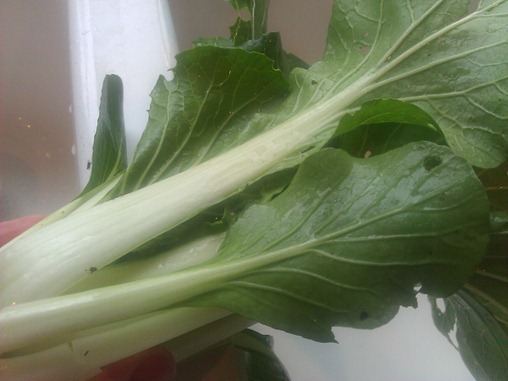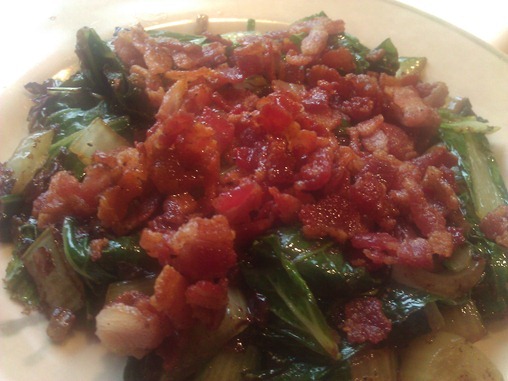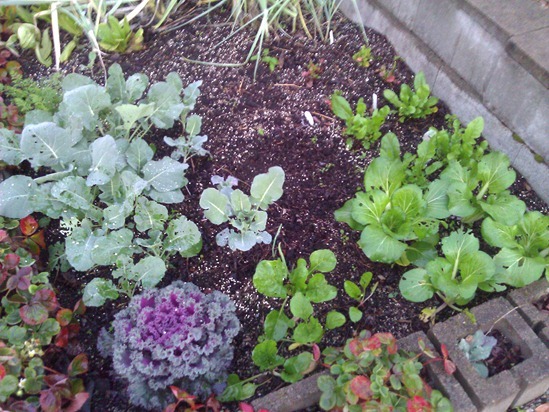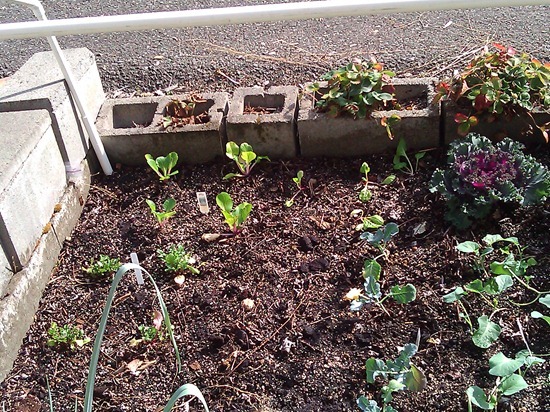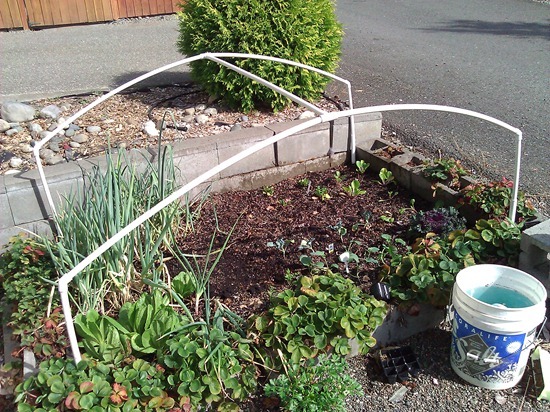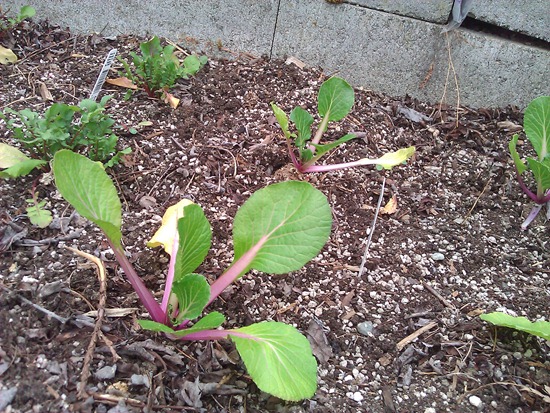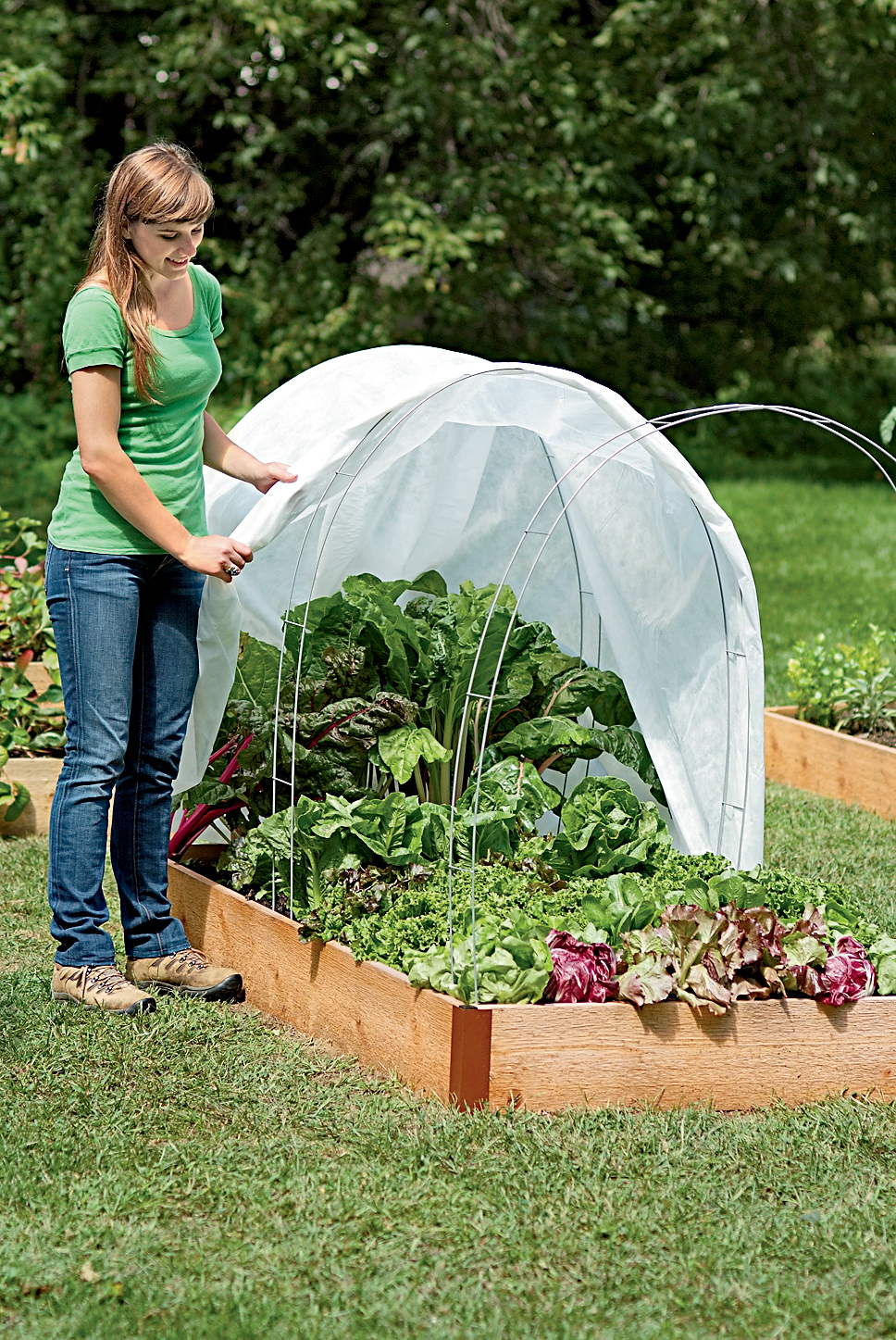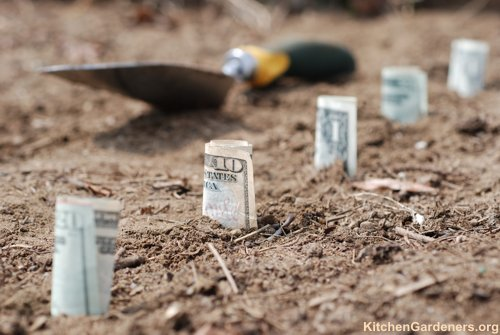Cream of the Crop: 5 Ways to Work with Winter Vegetables
12.5 years ago winter garden
As we find ourselves in the throes of the fall and winter holiday season, food becomes a popular conversation starter. For some reason, though, winter vegetables are often treated with less creativity than their spring and summer counterparts. To spice up your diet while keeping it cheap and healthy, take a gander at the five winter veggies below and use them to wow your family and friends.
Kale
I’ve tried kale a few different ways now, and I think the trick with eating these greens is in their pairing and preparation. I, for example, love using kale in omelets, but I don’t add them in with the rest of the ingredients (onions, mushrooms, cheese, etc.). Instead, I wait until everything is nearly cooked, and then I throw in some cold and crisp kale. After a couple of minutes, the meal will be done, but the kale will retain its fresh properties, offsetting the rest of the ingredients and making for a more interesting and wide-ranging experience for your taste buds.
Another creative way to use kale is to make your own miso soup, chock full of these greens. Grab some brown rice paste from the supermarket and add it to your own custom-made lineup of vegetables and tofu–just don’t forget that kale! Even for the soup, I’ll hold off on putting the kale in the water too soon. Most restaurants will serve their greens fully-cooked and withered, but the soup (like the omelet) has more textural complexity if the ingredients aren’t all softened and sapped of some crucial nutrients.
If you’re going to maintain your own winter garden, plant some Winter Red or Wintebor kale in July or August, and then wait for those cabbage-like goods to crest.
Beets
Beets just might be my favorite winter vegetable/root. It’s also the main ingredient in my favorite salad, which is a twist on the otherwise run-of-the-mill beet salad. My brother’s girlfriend makes a salad that combines red and golden beets (3 red, 2 golden) with ¼ cup minced shallot, and some lamb’s lettuce. For the true kicker, she adds a few crumbles of goat cheese and a handful of pistachios to the mix.
If you plant some delicious Winterkeeper or Albina Verduna beet seeds in July, you’ll have those roots ready to go for your fall and winter harvest. In addition, the beet will re-sprout in the spring, offering some full, healthy leaves. Being able to harvest multiple times for the same food means you can eat with an improved sense of health and frugality. But whether you’re planting beets at home, or are getting your winter’s share at a natural market, be sure to try your hand at a beet salad.
Squash
Squash is the simple one of the bunch. Go ahead and make soup with it, or attempt to make a world-class plate of spaghetti. Even a casserole will suffice as a sure-fire crowd pleaser. But in my mind, there’s no better remedy for a long day at the office than a whole butternut squash emerging from the oven. Your whole house will feel warm and smell of the harvest. The flesh should be nice and soft, and easy to scoop out with spoon or fork. I usually just put some butter on the warmed flesh, but you might want to try adding some brown sugar to the mix if you’re feeling especially daring. Butternut squash is filling but cheap and simple to prepare, and winter just wouldn’t be the same without it.
Mustard
Mustard leaves aren’t as commonly thought of as kale, spinach, collards or arugula. But the leaves of mustard are peppery in taste, and are great for making exotic dishes. I’m happy snacking on them as raw greens, when they still taste like spinach or radish roots, and if I cook them, I usually just sprinkle on some lemon juice and garlic. If you want to replace the lemon juice, try a bowl of mustard leaves with sesame oil and rice. Mixing and matching is the name of the game for mustard greens, and experimentation will allow them to be your most versatile winter food.
If you’re planting mustard at home, press those seeds anytime from August to the middle of October, when the brunt of summer heat has passed. After you’re done collecting the leaves, let the plant go to seed for a secondary harvest later on.
Chives
Chives are my wild card choice for this list. You won’t be able to harvest the chive stalks in winter, or even be to grow them easily in the colder seasons and climates. However, if you plant them under a cloche, or germinate them indoors before moving them outside as the weather breaks and warms, then you’ll have my absolute favorite green ready for a spring harvest. When I was a child, I used to eat chives straight from my uncle’s garden. They’re great for garnish on baked potatoes, and also make for an excellent addition to any soup stock or broth. Whereas most of the other foods on this list are featured as main ingredients, chives are sure to act as foils for other foods they mingle with, and will amplify a dish’s whole overall flavor. This might not be a food that’s in season during the winter months, but it will make for a great winter project, and will ensure that the next season kicks off the right way.
Whether you’re maintaining your own winter garden, or are just plucking the goods from local markets, the 5 foods above will make your winter cuisine more complex in flavor and your winter preparations more creative and enjoyable. Best of all, each item is relatively cheap and also healthy, which means that you can be frugal with the greens in your wallet, as well.
Adam J.’s appreciation for winter vegetables is surpassed only by his enjoyment of Heirloom Tomatoes. He writes for FrugalDad.com; check out his blurb or contact him at adam ATT frugaldad DOTT com.
Harvesting some Bok Choy from my winter garden
12.5 years ago bok choy, recipe, winter garden
I got my first harvest from my winter garden, I could have given this a couple weeks more but the plants were starting to get crowded. Not ever cooked Bok Choy I went with the idea that everything is better with bacon and made some Bok Choy with bacon…or maybe could call it Bacon with some Bok Choy.
Not only delicious but given its low calorie count (14 calories per 100g) and being high in Vitamin A/C/K and a good source of folates, calcium, and iron.
Quick winter garden update
12.5 years ago bok choy, broccoli, cold season crops, garlic bulbs, winter garden
The weather is starting to get colder (yesterday woke up to 37F) but still in safe ranges for my winter garden which is doing great. An abundance of Kale and arugula and chard and bok choy are getting pretty close to harvest. Broccoli is taking its time like it should.
I also planted some chives, onions which I started from seeds several week ago. I have also planted a bulb worth of garlic to harvest next summer.
What I am growing in my winter garden
12.6 years ago bok choy, cold season crops, garlic bulbs, leeks, lettuce, onions, winter garden
I normally get burned out over the spring/fall and don’t do much for the fall/winter season. This year I decided I want to have a nice selection of winter veggies so I am going all out and start my winter garden.
In the garden now are kale, broccoli, bok choy, carrots, spinach, romaine lettuce, arugula (one of the most profitable vegetables), bunching onions, garlic, and leeks. I wanted to grow Brussel sprouts but I should have started those about 4 month ago.
I grew the lettuce, broccoli, onions, and leeks from seeds in the grow box and transplanted them a few of weeks ago. The bok choy, kale, and arugula were an impulse addition when I saw the plants on sale and struggling at my local grocery store.
All of these plants should do pretty well with the mild winters we get here in the Pacific Northwest…but our hard rains and occasional snowfall could lead to their downfall. For this reason I came up with this structure which when the rains and/or low temperatures come I will cover with 2.5mm plastic sheeting. Though I plan on adding one more set of cross pieces to prevent sagging in the middle, I consider this design a bit of a hybrid between row covers and a full blown hoop house.
This will provide plenty of space for the plants to grow and ease of getting under the structure to harvest in the rain while not large enough to hopefully not catch a little wind and sail away.
I am excited to continue to collect my harvests all year round.
How to start a winter vegetable garden
12.6 years ago broccoli, cold season crops, fall crops, freezing, leeks, lettuce, onions, spinach, winter garden
Why let your gardening season end, with a little creativity there are many vegetables that can continue growing right through winter. I find this fun as wells of a rewarding challenge bringing in some great produce from my garden all year round.
Choosing your winter vegetables
First we need to determine what vegetables to grow, given temperature and lack of light will be a reality we will have to go with the colder tolerate spring/fall options. below are some of my favorites and their typical hardy temperatures.
Arugula: Hardy up to 15F (-9C). Not only is this the most profitable vegetable to grow per square foot it is a tasty and nutritious addition to your garden salads a very good source of vitamin A/C/K, folate, calcium, iron, magnesium, phosphorus, potassium and manganese.
Beets: Hardy up to 20F (-7C). With beets you have a couple of options, eat the roots which are an excellent source of folate, potassium and manganese. The other option is to eats the beet greens which are an excellent source of vitamin A/C/E/K/B6, thiamin, riboflavin, calcium, iron, magnesium, potassium, copper and manganese
Bok choy: Hardy up to 24F (-4C). Bok choy is a great source of vitamin A/C/K/B6, riboflavin, folate, calcium, iron, magnesium, potassium and manganese.
Broccoli: Hardy up to 10F (-12C). So many options here and great eat fresh and if you get too much at once it is easy to freeze your excess crops while being a great source of Vitamin A/C/K/B6, folate, potassium and manganese.
Brussels Sprouts: Hardy up to 0F (-16C). If the thought of Brussels sprouts sicken you, don’t give up on these until you try some fresh from your garden. As an added bonus this is a great source of vitamin A/C/K/B6, thiamin, folate, potassium and manganese.
Cabbage (Winter): Hardy up to 5F (-14C). Use for raw for coleslaws or cooked in stews or soups to add some vitamin C, folate, potassium and manganese to your next meal.
Carrots: Hardy up to 15F (-9C). Great in salads, stir-fry, or raw as a quick snack and is also a great source of Vitamin A/C/K and potassium
Collards: Hardy up to 24F (-4C). Great sautéed with a little oil with salt and pepper and a great source of vitamin A/C/E/K/B6, riboflavin, folate, calcium and manganese.
Endive: Hardy up to 5F (-15C). Great addition to salads as well as making or a great addition to sounds. Endive is high in vitamin A/C/K, thiamin, riboflavin, folate, pantothenic acid, calcium, iron, potassium, zinc, copper and manganese.
Kale: Hardy up to 8F (-13C). Sauté as a great side or even bake to make some delicious Kale chips and is high in vitamin A/C/K/B6, calcium, potassium, copper and manganese.
Kohlrabi: Hardy up to 15F (-9C). The taste and texture of kohlrabi are similar to those of a broccoli stem or cabbage heart, but milder and sweeter, with a higher ratio of flesh to skin. The young stem in particular can be as crisp and juicy as an apple, although much less sweet1. Kohlrabi is a great source of vitamin C/B6, potassium, copper and manganese
Garlic: Hardy up to 8F (-13C). One of the most useful aromatics to use in your kitchen and high in vitamin C/B6 and Manganese.
Leeks: Hardy up to 8F (-13C). Great additions/bases for many soups and stocks. Has flavor of onion though not quite as overpowering. It is also a great source of vitamin A/C/K, folate and manganese.
Lettuce: Hardy up to 24F (-4C). Staple for a quick winter salad. Choose varieties with darker leaves for more nutritious goodness of vitamin A/C/K, thiamin, folate, iron, potassium and manganese.
Onions (Bulb): Hardy up to 0F (-18C). Plant these out this fall/winter for some nice large bulbs next spring summer. These provide a great deal of versatility and vitamin B6, folate, potassium and manganese, and a very good source of Vitamin C.
Onions (Bunching): Hardy up to 10F (-12C). Plant a bunch of these and your garden and they will continue to spread and provide additional produce to your kitchen. With just a little bit of protection you can have onions all winter.
Peas: Hardy up to 35F (2C). Can be shelled and cooked and eaten as is or added to some nice soups in the wintertime or kept in the shells and eat raw or a great addition to a nice stir-fry. Peas also provide vitamin A/C/K, thiamin, folate, iron and manganese.
Spinach: Hardy up to 8F (-13C). Just recently got turned back to eating spinach, previously just used in an occasional salad but now I add to omelets every morning for some great taste but are also packed with nutritional potency being a very good source of protein, vitamin A/C/E/K/B6, thiamin, riboflavin, folate, calcium, iron, magnesium, phosphorus, potassium, copper and manganese.
Swiss Chard: Hardy up to 20F (-7C). Vitamin A, Vitamin C, Vitamin E (Alpha Tocopherol), Vitamin K, Riboflavin, Vitamin B6, Calcium, Iron, Magnesium, Phosphorus, Potassium, Copper and Manganese.
When can you actually grow these vegetables
Now that found the vegetables you want to grow now is a good time to check those hardy temperatures of the vegetables you have chosen compared to your average winter temperatures. If your average low for the day is going to fall at or below that limit you may want to consider skipping that one or invest in a little protection.
Using a site like WeatherSpark, you can determine what your average low is for your area and then determine what vegetables you can grow during the winter. As you can see above on average in my area the average low is 36F which allows me to grow most of the cold season vegetables mentioned above. Though it is possible to get an occasional cold streak which cold mean death to my vegetables over the winter.
By using some row covers you can provide a little extra temperature (5-10F) depending on the thickness of the plastic and the volume of air you are attempting to keep warm. The thicker the plastic the better the temperature retention though allows less light to get through. For my area I am going with 2.5mm which should provide some decent protection while still allowing needed light in. When things really go bad you can also supplement with a light blanket at night and/or a couple strings of regular old Christmas lights (no LEDs for this application) to provide a few more degrees.
How to start your vegetables
Though your plants may grow well in the low temperatures germination can be incredibly slow at lower temperatures even for cold weather plants. For this reason you should start your vegetables indoors and bring them outdoors with some minimal hardening off.
As a general rule here are the plants you should be able to start as seeds in the ground now (September):
- Carrots
- Garlic
- Lettuce
- Onions (sets for green onions, seeds for spring onions)
- Radishes
- Spinach
Other plants should be started indoors and planted out as starts. These can be brought out right now so check you local grocery store…this time of year I have found 4-packs of winter vegetable starts as low as $0.25 as the stores are making room for the Halloween pumpkins coming in. Since you will want a continuous harvest you can also start seeds now and every few weeks for a constant supply of winter vegetables all winter long.
Summing things up
By taking maturing and harvest time into account and creating continual planting you should supply yourself with delicious and nutritious selection of vegetables all winter long. I was going to go into what I am growing this year…but this post is already getting long so will write about that later…
The most profitable plants in your vegetable garden
15.4 years ago cheap, cilantro, garlic bulbs, organic, seedling, seeds, vertical gardening, winter garden
Many vegetables can be expensive to purchase by growing the most expensive vegetables in your garden and buying the least inexpensive vegetables at your grocery store you can easily help drop your food budget. This especially important for people like me with very limited space to grow everything that I consume.
It may be impossible to put a price on the satisfaction of bringing in a basket of produce fresh from your garden. As well as the enhanced flavors from having truly fresh produce from your garden compared to that of your local supermarket. Though when I was harvesting my potatoes this summer with my daughter I did have the thought, Would it have been smarter for me to grow something else in this space? I estimate out of the 4-5 square feet I used for these plants I probably got about $4-5 worth of potatoes.
I did a little research first to determine yields of various plants per square foot and secondly what the value (organic supermarket prices USD) of the yielded produce at harvest. Given I am a city dweller with a fairly small footprint for my vegetable garden (about 30-35 square feet) making decisions on what to buy at the supermarket and what to grow in the garden may be a huge money saver with just a few dollars invested in some seeds for your vegetable garden
Now from the results below you can see the winners for the most produce value per square foot are many of the leafy green vegetables/herbs (cilantro, lettuce, chives, dill, Swiss chard) next comes many of the larger vine plants (tomatoes, squash, pumpkins, peas) with many of the root plants taking up the rear. Now much of this makes sense where many of the vine plants grow on trellises and are allowed to spread, which I guess is sort of cheating the square foot rule but I will let it slide. Compared to the root plants whose production is entirely dependent on the space allowed in square footage they have to grow as well as these are normally inexpensive produce items to begin with.
| Vegetable | USD Value/SF |
| Cilantro | $ 21.20 |
| Arugula-Roquette | $ 20.92 |
| Green Salad Mix | $ 17.55 |
| Chives | $ 16.40 |
| Dill | $ 16.40 |
| Lettuce | $ 16.20 |
| Tomato, Cherry, small & medium | $ 15.57 |
| Turnip | $ 9.90 |
| Tomato, large | $ 9.50 |
| Squash, Winter | $ 8.40 |
| Tomatillo | $ 8.00 |
| Cucumber | $ 7.74 |
| Basil | $ 6.63 |
| Radish, Red | $ 6.22 |
| Pumpkin | $ 6.20 |
| Chard, Swiss | $ 6.14 |
| Celery | $ 6.00 |
| Squash, Summer | $ 5.96 |
| Choi | $ 5.70 |
| Peas, Snow | $ 4.50 |
| Pepper, Jalapeno | $ 4.50 |
| Squash, Summer, Zucchini | $ 4.17 |
| Onion, Bunching | $ 4.14 |
| Pepper, Bell | $ 3.60 |
| Brussels Sprouts | $ 3.59 |
| Carrots | $ 3.56 |
| Rhubarb | $ 3.25 |
| Squash, Winter, Butternut | $ 3.20 |
| Kale | $ 3.07 |
| Grass, Lemon | $ 3.00 |
| Peas, English | $ 3.00 |
| Onion, Bulb | $ 2.63 |
| Radish, White | $ 2.60 |
| Bean, Bush | $ 2.51 |
| Peas, Edible Pod | $ 2.50 |
| Artichoke, Globe | $ 2.40 |
| Cabbage, Chinese Napa | $ 2.24 |
| Squash, Winter, Delicata | $ 2.10 |
| Spinach, Spring/Fall | $ 1.80 |
| Leeks | $ 1.75 |
| Potatoes | $ 1.50 |
| Parsnips | $ 1.50 |
| Garlic | $ 1.37 |
| Squash, Summer, Yellow | $ 1.34 |
| Parsley | $ 1.31 |
| Corn | $ 1.25 |
| Squash, Winter, Acorn | $ 1.20 |
| Squash, Winter, Hubbard | $ 1.20 |
| Eggplant | $ 1.10 |
| Greens, Mustard | $ 1.10 |
| Rutabaga | $ 1.00 |
| Beet | $ 0.89 |
| Cabbage, Savoy | $ 0.80 |
| Broccoli | $ 0.80 |
| Kohlrabi | $ 0.75 |
| Cauliflower | $ 0.60 |
| Broccoli, Chinese | $ 0.60 |
| Cabbage | $ 0.50 |
Sources: http://www.mcgoodwin.net/pages/ppatch.html for plant yield information, http://shop.safeway.com for current produce prices
Now even with this information I will still plan on growing some onions and garlic since I more than likely would be forced to use dehydrated alternatives due to being too lazy to drive to the supermarket to buy fresh varieties. Though I may be adding some more herbs/greens to my garden this year.
One important thing to remember is you still have to eat the vegetables, throwing $20 worth or arugula or cilantro into the compost bin is not exactly a sound investment. You can also get higher yields by growing vertically, but don’t forget those tall plants produce a larger shadow so you may still need some extra ground space to support these alternate growing methods.
So go out and get some cheap vegetable seeds (or in many cases free) and plant some profitable vegetables in your backyard/patio garden this spring.
Tags: cilantro, compost, garlic bulbs, herb garden, organic vegetables, outdoor plants, pepper plants, tomato plants, vegetables

